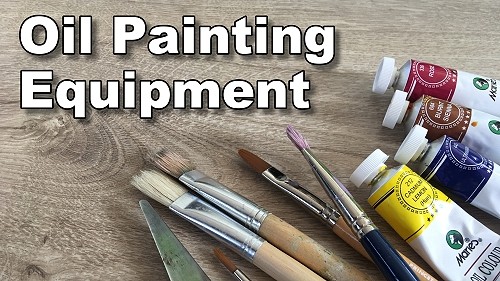How to Paint a Leopard in Oil
Skill Level : 3 Advanced
Medium : Oil Painting
Subject : Animals
Tutor : Nolan Clark
Class Length : 1 hour 42 minutes
Avg Rating : 
Silver Level or Higher Class
Class Description
We will learn how to paint a Leopard portrait
During the class you will learn:
1) How to use texture paste to create depth on the canvas
2) How to paint short haired animals
3) How to correctly paint the spots
4) How to paint realistic eyes
5) and much more
Latest Reviews


I loved working on this and the texturing really makes it kind of dangerous like the Leopard is right in front of you.
Nolan is so wonderful showing step by step how to work the texturing ,mix the right colors and Painting the Hair a wonderful technique to learn here. Thank you Nolan !
I had a blast !
Mireille Fournier
Mireille Fournier
Class Tutorial
Planning

Transfer the tiled pieces of the portrait-like close up of the leopard to the canvas, and then make your own transparent template from baking paper (waxed paper) to lay over the canvas to help you keep your painting in alignment.
Texturing

Begin the texturing process by applying a light layer of the texturing paste (such as spackle or Polyfiller) to facial features. Apply layers to the desired thickness. Be sure to duplicate the angles as seen in the reference photo. Sculpt out a “looking-in” effect at the bottom of the nose.
Move on to the muzzle area next to his nose and build up that area as Nolan does. Use the template or check the reference photo often to be sure you have the contouring correct.
Continue on in the same manner to texture the remainder of the face. Note that you will need to carve out places for the eyes. Use cling wrap to smooth out the paste before it dries. Spritz VERY lightly with water if need be.
Shape the ears next. Follow Nolan's technique to get the shaping correct. Note that you will lift the ears away from the body.
Allow the texturing to dry overnight. Make any needed corrections after it has dried – sandpaper will be helpful for this.
Background

Mix the colours you will need for the background grasses, then adjust for several tonal values. Block in the grasses randomly. Gently blend them in, keeping them out of focus. Add some impressions of branches and sky colour, again keeping it blurred and out of focus. Be sure that there are no hard edges here.
Leopard colour mixing

Mix the colours that you will need for the leopard, including highlights and shadows.
Eyes

Follow Nolan's lead and paint in the eyes.
Right cheek

Use the unique brush stroke that Nolan utilizes in painting the small area under the leopard's left eye. This stabbing motion is best for creating the look of short, fine hairs.
Bridge of nose

Continue using the same brush stroke to paint the nose, constantly creating contrast by overlapping dark and light colours.
Forehead

Paint the forehead in the same manner as you did the bridge of the nose.
Nose

Apply the colours and skin tone mix that Nolan uses for the nose, then blend them together. Use your darkest dark to create the “looking in” effect on the nose.
Chin

Add your darkest dark where the mouth and chin meet, then fade it out. Add the black markings. Then flick out small white hairs along the edge of the chin and flick them also from the spots on the chin.
Enjoying This Tutorial?
Upper lip
Move to the upper lip area and continue using the same technique. Note here that Nolan shows in more detail how to paint those black spots.
Left cheek

Paint in the basic fur colours for the cheek area, being mindful of the contours and contrasts. Once you are satisfied with the shapes and contours, add the spots. Then flick a bit of the fur colour into the spots.
Face spots

Once you are satisfied with the shapes and contours, add the dark spots. Again, flick a bit of the fur colour into the spots.
Forehead

Using an upward stabbing motion, make longer flicks to create hair at the top of his head.
Right ear

Using the darkest colour to create the “looking in” effect in the inner ear and then going lighter as you move away. Flick on clumps of hairs inside the ear.
Forehead spots

Check your reference photo as you paint on the black spots on the forehead. Flick on the hairs.
Body

Paint in the fur colours as you start painting down the body. Be sure to follow the contours and create the folds. Darken the area under the chin.
Body spots

Begin painting on the leopard's spots. Refer to your reference photo to be sure to get the correct angles. Note that some spots will actually be part of a rosette shape. Blend the spots in so that they do not look like they are tacked on.
Left ear

Start by painting dark on the inside and gradually going lighter as you move out. Flick in some hairs.
Gums & whiskers

Paint the black gum area, adding some sky-color highlights. When your painting is dry, add the long whiskers out of the black spots. Note that some are at different angles.
Final overview

Go back over the painting as Nolan does to be sure you have all the details correct.

You May Also Like |








